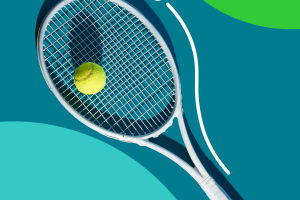Tennis is a sport that has been played for over eight centuries and has undergone significant changes over time. It is known as one of the world's four major gentleman's sports, along with golf, bowling, and billiards.
Its origin can be traced back to the 12th and 13th centuries in France when a game of hitting a ball with the palm of the hand was popular among missionaries.
They used a cloth-wrapped hairball and played in an open space between two people separated by a rope.
The 16th and 17th centuries were the period when tennis flourished and gradually became a competition. Before this time, tennis was also known as "court tennis" because it was only popular at the French and English courts. In 1858, an Englishman named Harry Mayhem built a "tennis court" on a friend's lawn in Birmingham, England, promoting the early days of the game.
In 1872, he founded the Leamington Tennis Club to expand the game's influence and promote the formation of tennis.
At that time, the majority of tennis players were wealthy bourgeoisie who had the means to set up tennis courts on their own lawns as a place for their social activities. In the mid-1890s, tennis entered its initial stage of development, and many countries and regions organized tennis associations and held regular tournaments.
Tennis has undergone significant development since the 1970s. The faster development of tennis can be attributed to several factors. Firstly, professional players were allowed to participate in tournaments such as Wimbledon, which pioneered the professional tennis tour.
This abolished the boundaries between professional and amateur players, increased the intensity of the competition, and created an atmosphere of heated competition. As a result, it promoted the improvement of the technical level of the players and attracted the enthusiasm of the majority of tennis fans to engage in the sport and watch tennis matches.
Secondly, the application of technology in the manufacture of rackets and other equipment has promoted the production of advanced equipment and the improvement of technical level, creating a number of young and excellent players, thus promoting the forward development of tennis.
The basic techniques of tennis include grip, preparation position, pumping technique, chipping technique, interception technique, high-pressure technique, high pick technique, serving technique, and receiving technique.
The grip method indicates a hand grip with the tiger mouth aligned with the top of the handle and the palm of the hand placed on the right side of the handle. This grip is one of the more widely used grips at present. A forward strike is very powerful, and the counter racket hitter must be to the left.
Interception is a method of hitting the ball before it lands and is an important technique essential to internet tactics. Flat interception and cut interception are the most commonly used in the game.
The high-pressure ball is the basic technique of snapping high balls. Standing, backwards, or jumping can be used according to the height of the ball. Generally, a flat hit or slicing high-pressure ball method is used.
The pick high ball is used to hit the rebound and put a short ball, which is a mutation technique.
The serve is a way to gain the initiative. Mastering powerful, fierce, multi-spin serves can directly score points or create opportunities at the net. There are flat hits, topspin, and cut serve.
Receiving is the way to counter the opponent's serve. A good receiver should have quick reflexes, and anticipation, and be able to return the ball accurately and effectively.
In conclusion, tennis is a sport with a long and rich history, and it has undergone significant development over time. With the application of technology and the participation of professional players, tennis has become a global sport that attracts many enthusiasts worldwide.


